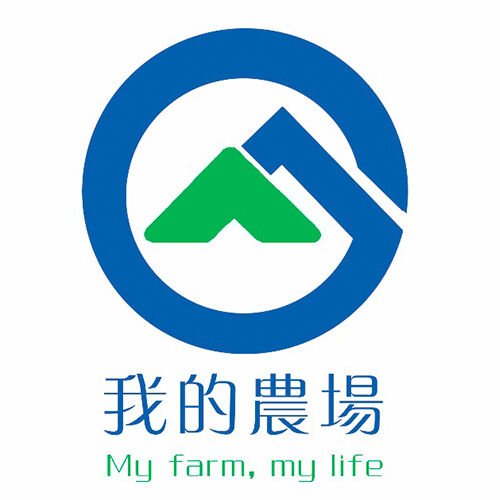The agricultural machinery industry in the United States is highly developed and technologically advanced, with a long history of innovation and productivity. The industry is driven by the needs of the country's large and diverse agricultural sector, which includes crops such as corn, soybeans, wheat, and cotton, as well as livestock such as cattle and poultry.
Some of the key players in the agricultural machinery industry in the United States include John Deere, CNH Industrial, AGCO Corporation, and Kubota Corporation, among others. These companies produce a wide range of machinery and equipment for farmers, including tractors, combines, planters, sprayers, and irrigation systems.
The industry has also seen significant advancements in precision agriculture technologies, such as GPS-guided equipment and data analytics, which allow farmers to optimize their crop yields and minimize waste. In addition, there has been a growing trend towards sustainable agriculture practices, which has led to increased demand for equipment that can help reduce the environmental impact of farming.
Overall, the agricultural machinery industry in the United States is a critical component of the country's agricultural sector, helping to drive productivity, efficiency, and innovation in one of the world's largest and most important agricultural markets.
美国的农机行业非常发达和技术先进,具有悠久的创新和生产力历史。该行业受到美国大型多样化农业部门的需求驱动,该部门包括玉米、大豆、小麦、棉花等作物以及牛、禽等畜牧业。
该行业的一些主要参与者包括约翰迪尔、CNH、AGCO和久保田公司等。这些公司生产广泛的农业机械和设备,包括拖拉机、联合收割机、种植机、喷雾器和灌溉系统等。
该行业还取得了显著的精准农业技术进展,例如GPS引导设备和数据分析,这使农民能够优化作物产量并减少浪费。此外,可持续农业实践日益增长,这导致了对能够帮助减少农业环境影响的设备的需求增加。
总的来说,美国农机行业是该国农业部门的关键组成部分,帮助推动世界上最大、最重要的农业市场之一的生产力、效率和创新。

The agricultural machinery industry in the United States has several advantages, including:
Technological Advancements: The industry is highly advanced in terms of technology, with a long history of innovation and productivity. This has resulted in the development of high-quality, reliable, and efficient machinery and equipment.
Strong R&D Capabilities: The industry has strong research and development capabilities, with companies investing heavily in research to develop new and improved machinery and equipment to meet the changing needs of the agricultural sector.
Diverse Product Range: The industry produces a wide range of machinery and equipment for farmers, including tractors, combines, planters, sprayers, and irrigation systems, among others.
High Productivity: The use of advanced machinery and equipment has led to high levels of productivity in the agricultural sector, helping farmers to increase their yields and reduce costs.
Large Market Size: The United States has one of the largest and most important agricultural markets in the world, providing a large customer base for the agricultural machinery industry.
Strong Supportive Infrastructure: The industry benefits from a strong supportive infrastructure, including a well-developed transportation network and access to a skilled workforce.
Overall, these advantages have helped the agricultural machinery industry in the United States to become a critical component of the country's agricultural sector, driving productivity, efficiency, and innovation in one of the world's largest and most important agricultural markets.
美国农机行业有许多优势,包括:
技术先进:该行业在技术方面非常先进,具有悠久的创新和生产力历史。这导致了高质量、可靠和高效的机械和设备的开发。
强大的研发能力:该行业具有强大的研究和开发能力,公司投入大量的研究来开发新的和改进的机械和设备,以满足农业部门不断变化的需求。
多样化的产品范围:该行业生产多种农业机械和设备,包括拖拉机、联合收割机、播种机、喷雾机和灌溉系统等。
高生产力:先进的机械和设备的使用提高了农业部门的生产力水平,帮助农民增加产量和降低成本。
巨大的市场规模:美国拥有全球最大和最重要的农业市场之一,为农机行业提供了庞大的客户基础。
强大的支持基础设施:该行业受益于强大的支持基础设施,包括发达的运输网络和获得技能熟练的劳动力。
总的来说,这些优势帮助美国的农机行业成为该国农业部门的关键组成部分,在全球最大和最重要的农业市场之一中推动生产力、效率和创新。

The agricultural machinery industry in the United States faces several challenges, including:
High costs: Agricultural machinery and equipment can be expensive, making it difficult for smaller farms to afford and leading to increased competition within the industry.
Rapidly changing technology: Keeping up with the latest technological advancements can be a challenge, particularly for smaller companies with limited resources for research and development.
Regulatory pressures: The industry is subject to a range of regulations related to environmental concerns, safety standards, and other issues, which can add to the cost and complexity of producing agricultural machinery.
Labor shortages: The agricultural industry as a whole is facing labor shortages, which can make it difficult for companies to find and retain skilled workers to manufacture and service machinery.
Trade and economic policy uncertainty: The agricultural machinery industry is heavily dependent on international trade, and uncertainties related to trade and economic policies can create challenges for companies in terms of supply chains and market access.
美国农机行业面临着多重挑战,包括:
高成本:农业机械和设备成本较高,使得小型农场难以负担,导致行业内竞争加剧。
技术快速更新:跟上最新技术的步伐可能是一个挑战,特别是对于资源有限的小型公司来说,其研发能力有限。
监管压力:行业受到各种环保、安全和其他问题相关的监管,这可能会增加农机生产的成本和复杂性。
劳动力短缺:整个农业行业都面临劳动力短缺,这可能使得公司难以找到和留住制造和维修机械的熟练工人。
贸易和经济政策不确定性:农机行业严重依赖国际贸易,与贸易和经济政策相关的不确定性可能给公司的供应链和市场准入带来挑战。

The agricultural machinery industry in the United States can address its challenges through various means, including:
Investing in research and development: Companies can invest in research and development to stay ahead of rapidly changing technologies and create innovative solutions that meet the needs of farmers.
Reducing costs: Companies can work to reduce costs by improving manufacturing processes, increasing efficiency, and leveraging economies of scale to offer more affordable machinery and equipment.
Emphasizing sustainability: The industry can place greater emphasis on sustainability, developing equipment that is more environmentally friendly and promoting sustainable farming practices.
Addressing labor shortages: Companies can invest in training and development programs to help address labor shortages and ensure a skilled workforce to manufacture and service machinery.
Diversifying markets: Companies can diversify their markets, seeking out new opportunities for growth and expanding their customer base beyond the United States.
Engaging with policymakers: Industry leaders can engage with policymakers to help shape regulations that promote innovation and growth in the agricultural machinery industry.
Overall, by pursuing these strategies and others, the agricultural machinery industry in the United States can work to address its challenges and continue to drive productivity, efficiency, and innovation in the agricultural sector.
美国农机行业可以通过多种方式应对其面临的挑战,包括:
投资于研究和开发:公司可以投资于研究和开发,保持领先地位,创造符合农民需求的创新解决方案。
降低成本:公司可以通过改进制造过程、提高效率和利用规模经济等方式降低成本,提供更为经济实惠的机械和设备。
强调可持续性:行业可以更加重视可持续性,开发更环保的设备,促进可持续农业实践。
应对劳动力短缺:公司可以投资于培训和发展计划,帮助应对劳动力短缺,确保具备制造和维护机械的熟练工人。
多元化市场:公司可以多元化市场,寻找新的增长机会,扩大客户群体,超越美国国内市场。
与政策制定者合作:行业领袖可以与政策制定者合作,帮助塑造促进农机行业创新和发展的法规。
总体而言,通过追求这些策略和其他策略,美国农机行业可以应对其挑战,继续推动农业部门的生产力、效率和创新。


小程序扫码观看
更多农机资讯尽在农机一键查
版权声明:本文仅代表作者观点,不代表农机新闻网立场。 本文为分享行业信息所用,如需转载,请联系原作者。
网友评论仅供其表达个人看法,并不代表农机新闻立场。



 众智
众智








